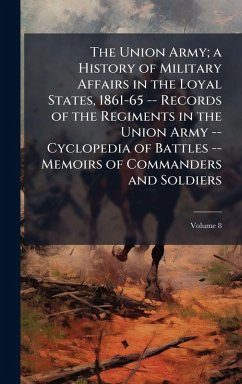
Proactive CAS for Company Commanders
Versandkostenfrei!
Versandfertig in über 4 Wochen
25,99 €
inkl. MwSt.
Weitere Ausgaben:

PAYBACK Punkte
13 °P sammeln!
Currently, even though emergency Close Air Support (CAS) is generally available, maneuver company commanders in Iraq and Afghanistan are unable to proactively plan for CAS. Army leadership has asked that JTACs be made available to the company level instead of at the battalion level where they are now attached. Although Air Force leadership has made some efforts to increase the number of qualified JTACs, the target number of around 1,000 personnel will not be reached until 2012. Additionally, once the JTACs are available, the Air Force leadership is concerned about the number of sorties require...
Currently, even though emergency Close Air Support (CAS) is generally available, maneuver company commanders in Iraq and Afghanistan are unable to proactively plan for CAS. Army leadership has asked that JTACs be made available to the company level instead of at the battalion level where they are now attached. Although Air Force leadership has made some efforts to increase the number of qualified JTACs, the target number of around 1,000 personnel will not be reached until 2012. Additionally, once the JTACs are available, the Air Force leadership is concerned about the number of sorties required to keep them current. In order to produce the number of JTACs requested sooner, this paper makes three recommendations: 1) Expand Joint Air-Ground Operations Group (JAGOG) school at Nellis AFB, NV; 2) The Army JTAC, JFO and the basic equipment they require; 3) Change the deployment of all Air Support Operations Squadrons (ASOS) to one year instead of breaking the ASOS into three parts with four month tours for each airman. This work has been selected by scholars as being culturally important, and is part of the knowledge base of civilization as we know it. This work was reproduced from the original artifact, and remains as true to the original work as possible. Therefore, you will see the original copyright references, library stamps (as most of these works have been housed in our most important libraries around the world), and other notations in the work. This work is in the public domain in the United States of America, and possibly other nations. Within the United States, you may freely copy and distribute this work, as no entity (individual or corporate) has a copyright on the body of the work. As a reproduction of a historical artifact, this work may contain missing or blurred pages, poor pictures, errant marks, etc. Scholars believe, and we concur, that this work is important enough to be preserved, reproduced, and made generally available to the public. We appreciate your support of the preservation process, and thank you for being an important part of keeping this knowledge alive and relevant.












